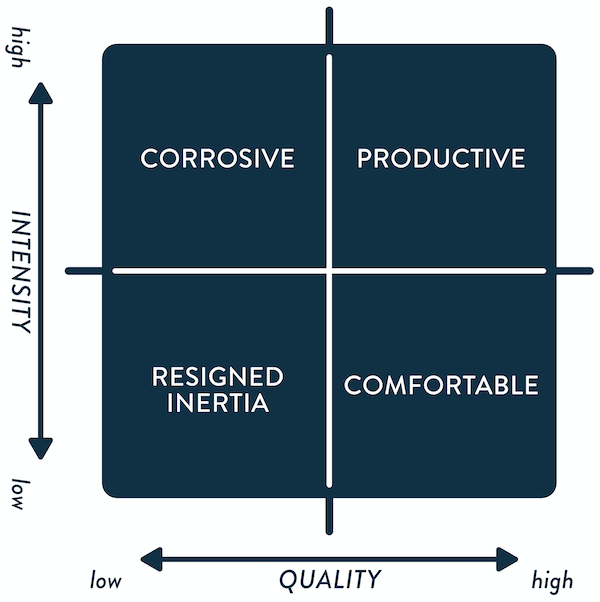Our sources
Energy, Heike Bruch & Bernd Vogel
IntroductionAs soon as you step through the front door of any organization your senses will immediately subconsciously notice if the energy is light or heavy. The effect of such energies is enormous, both on employees as well as on an organization’s clients.
Heike Bruch and Bernd Vogel, Professors at the St. Gallen University in Switzerland and the Henley School of Business in the UK, have carried out years of research into the influence of energy on organizations. They focussed on 70 multinationals worldwide. The results of this research are as simple as it is cutting edge. It shows in a very concrete and tangible way that energy has a direct effect on performance, productivity, loyalty, commitment and staff retention rates. No real surprise.
During their research they discovered two important aspects of energy:
- quality, the way that energy affects success
- intensity, the strength of the energy
Both characteristics can be rated high or low. You end up with the following energy matrix:
 A quick introduction to the four energies:
A quick introduction to the four energies:
- productive, contributes directly to success
- comfortable, allows the organization to “rest”
- corrosive, seen in criticism or resistance
- resigned inertia, where people are passive and have switched off
This clear definition of the four different energy types has also made it possible to measure them. This is exactly what Bruch and Vogel have done on a large scale in their research. They also shared numerous insights and concrete tips in their work, making working with energy now both tangible and manageable.
Concrete application in Spiral Drives™️We have been working with an instrument to measure the four energies using the Bruch and Vogel method since 2016, called the Collectives drivesDNA™️. This instrument focuses on both culture as well as energy, two aspects that are closely connected in the undercurrent of teams and organizations. Energy determines the vitality of a team or organization within the limits of the culture.
